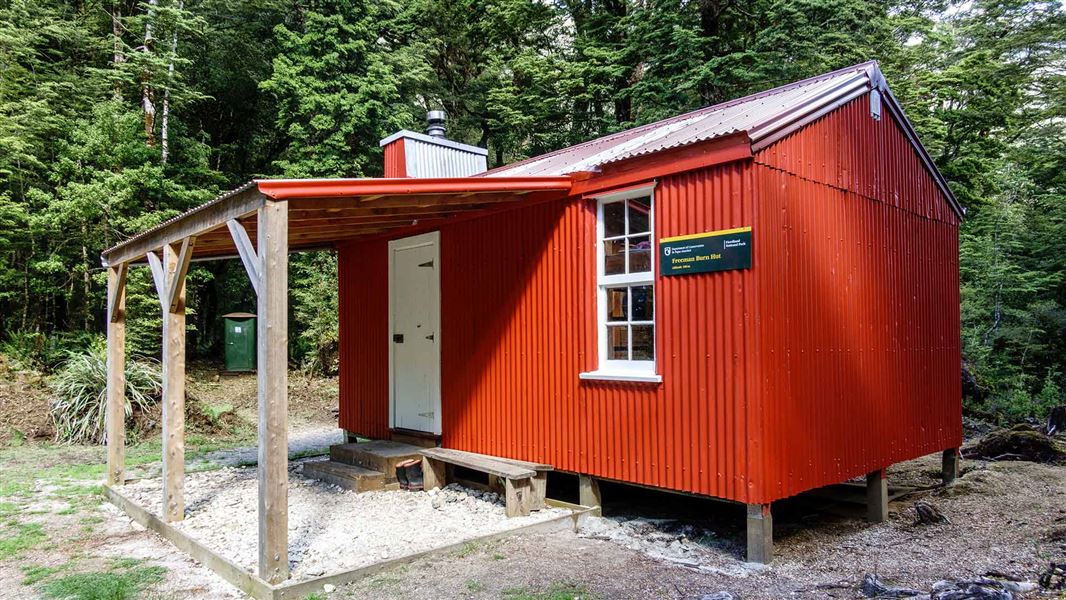Heritage
The Freeman Burn hut was built in the mid 1930s to cater for people walking the Bradshaw Sound-Lake Manapouri track, and is a reminder of the pioneers of private tourism enterprises in Fiordland.
Tourist accommodation
The Murrell family was one of the first two European families to settle at Manapouri. They took over the launch service which operated on Lake Manapouri in 1912. During the 1930s Leslie Murrell decided to expand his business by forming a round trip for walkers between Bradshaw Sound and Lake Manapouri via the Camelot River and Freeman Burn. The track was cut by local men. There were no formations and corduroy was used only in the very wettest areas. Four huts were built to accommodate walkers. The bridging was very basic and only put in where it was required during floods. The remains of a cage over the Freeman Burn still exist. This cage ran on three doubled strands of number eight wire.
Built to last
The Freeman Burn hut, located on a river terrace at the mouth of the Freeman Burn is the only remaining out of the four huts. While the other huts were built of punga logs and pit sawn mountain beech, Freeman Burn hut was built of heart rimu and clad with corrugated iron to keep the Fiordland weather out.
After Fiordland National Park was gazetted in 1952 the Park Board took over the maintenance of the Freeman Burn hut. During the 1960s and 70s many old huts were considered an intrusion to the natural values of the park and were removed. Fiordland’s weather has also led to the demise of many early buildings. The Freeman Burn hut was retained because of its proximity to a popular boating lake and has survived because of its sound construction.

